Clash of Titans
Games featuring a future Hall of Fame coach on each sideline.
October 31, 1914: Illinois @ Minnesota
Robert Zuppke vs Henry Williams
When Robert Zuppke became the head coach at Illinois in 1913, the dominant coaches in the Western Conference were Amos Alonzo Stagg of Chicago, Henry Williams of Minnesota, and William Juneau of Wisconsin. (Fielding Yost had withdrawn Michigan from the conference before the 1906 season.)
Zuppke's background was decidedly different from those coaches. Born in Berlin, he was brought to Milwaukee when he was two. He did not play varsity football as an undergraduate at Wisconsin. As Maynard Brichford puts it in his biography of Zuppke, "Zuppke studied football, participated in football practices and attended the games, but he did not make the team. He was a 'tackling dummy' who imitated the next week's opponents. As a slow, 142-pound pound quarterback, he competed with the second team against Ripon, Lawrence and the teacher's colleges. In the fall of 1903, he watched Amos Alonzo Stagg coach the Univer;sity of Chicago team against the Wisconsin varsity.
... Zuppke also observed Minnesota's team coached by Henry Williams ..."
That was enough to hook Zuppke on football and set him on his life's path as a football coach.
When Illinois hired Zuppke in 1913, his only head coaching experience was at Muskegon High School in Milwaukee and at Oak Park and River Forest High School in Oak Park, a suburb of Chicago. Using Yost's 1905 book Football for Player and Spectator as his guide, Zuppke led his high school teams to unprecedented success.
A drillmaster like Yost, Zuppke devised new punt formations and introduced spiral passes from center. (He would eventually add "flea-flicker" passes to his repertoire.) From 1906-09, his Muskegon teams compiled a 29-4-2 record. In '06, they outscored eight opponents by the Yost-like margin 289 to 6. Zuppke's 1909 squad that "featured passes reverses and spinner plays" held a local college team to a scoreless tie.
Zuppke moved to Oak Park in 1910 and immediately uplifted the high school's downtrodden football program. He taught the "open game" of football that featured "speedy and tricky offensive and defensive formations." Oak Park won 27 straight games over several seasons and sent players to Chicago, Dartmouth, Illinois, and other universities. All three of Zuppke's Oak Park teams won the Cook County football championship.
His success attracted the attention of the University of Illinois, whose Western Conference football team had won all seven of its games in 1910 before compiling a mediocre 7-5-2 record the next two seasons.
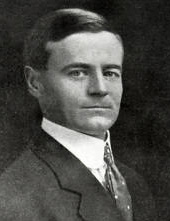

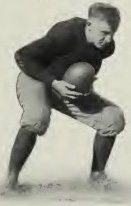

L-R: Robert Zuppke, Harold Pogue, George "Potsy" Clark, Henry Williams
University of Illinois Illio Yearbook, Class of 1915;
University of Minnesota Gopher Yearbook, Class of 1915
His first Illini team finished 4-2-1, a one-game improvement over 1912's 3-3-1. But for his second year, Zuppke had the players and system in place to contend for the conference championship.
Zuppke recalled his top teams in a 1952 letter. The 1914 team "had the qualities that all great teams must have." They were "fast, alert, aggressive, smart, and courageous. They could punt, pass, run, block, tackle, and handle the ball. ... The basic attack of the 1914 team was the balanced formation now known as the I formation. This was supported by the spread and the deep T–a punt formation adapted to quick openings, wide-running plays, passes with the ever-present threat of the punt. This is the only team in all my career which had the necessary talent for that formation and that is why I like to say that the 1914 team played the most modern game yet attempted. Its decisive victories and the fact that it was my first great college team make me think it was the greatest of all my teams. Two of my greatest college backs played on this team, (Harold) Pogue and Potsy Clark."
Zuppke's name was never used to describe an offensive system. He adjusted his formations from year to year, according to the available personnel. He would call his 1914 team his best. He said its diversification of talent allowed him to install a more complex offense than any of his later teams.
The Illini started the 1914 season with four shutouts while scoring 158 points. Three opponents were Western Conference foes: Indiana, Ohio State, and Northwestern.
Minnesota was also 4-0, outscoring opponents 90-13. The only Western Conference opponent was Iowa on the road, 7-0. As with Illinois, the upcoming game would be the Gophers' toughest test of the season.
In Champaign IL, 4,000 followed the game by telegraph at the football stadium.
In unseasonably warm weather, the two teams staged "one of the most bitterly contested games ever played on Northrop field." Neither team scored until the fourth period when "Illinois opened up with a bewildering array of forward passes and sensational line plunges that ripped gaps in the Gopher defense ..."
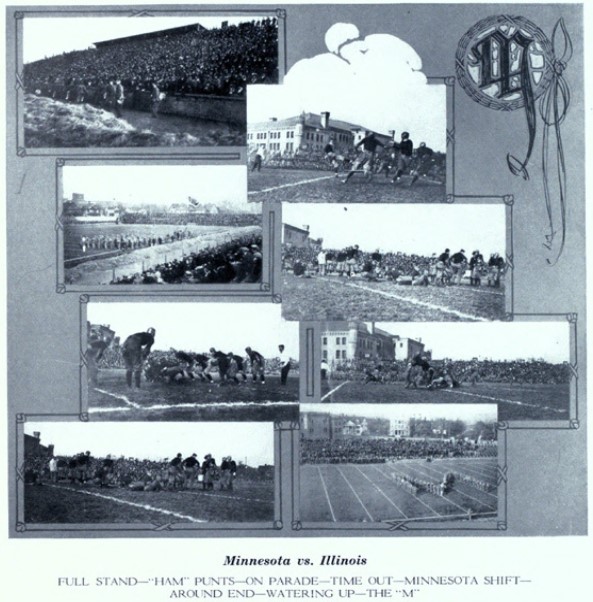
Montage from University of Minnesota Gopher Yearbook Class of 1916
First Quarter
Minnesota received the opening kickoff but soon had to punt. Potsy Clark excited the 150 Illini fans by breaking through the line for a 27y gain to the Minnesota 23. Eugene Schobinger plunged to the 15, but the thrust bogged down there.
Harold Pogue fumbled the ensuing punt, and C Boles Rosenthal recovered for Minnesota on the Illinois 25. But the Gophers were penalized twice for holding. After a gain back to the 20, FB Lorin Solon tried a placekick that failed.
Illinois stayed on the ground in its own territory, but the Gophers tried six passes, none of which connected. The scoreless quarter ended with Minnesota in possession at its 21.


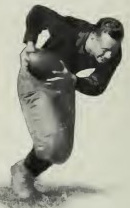

L-R: Eugene Schobinger, Bart Macomber, Alex Wagner, Perry Graves
University of Illinois Illio Yearbook, Class of 1915
Second Quarter
Clark again gave the Gophers a scare when he got the ball on a "double pass" and scampered 5y to the Minnesota 27. But the defense dug in and forced a field goal try by HB Bart Macomber that missed.
Staying on the ground, the Gophers marched relentlessly to the Illini three. But QB Arthur Erdall was thrown for a loss of two, and a pass over the goal line failed, which counted as a touchback to give Illinois the ball on its 20. Macomber immediately punted out of danger.
The Illini got a break when Alex Wagner recovered a fumble on the Minnesota 40 and set sail for the goal line. But Erdall ran him down. Two runs and an errant forward pass caused Macomber to try a placekick from the 35 that missed by three feet.
Potsy Clark bobbled a punt that Solon covered on the Illinois 30. Minnesota completed its second pass in 12 attempts but could only move close enough to try a placekick that fell short.
The scoreless half ended with Illinois holding the ball in the center of the field. Minnesota made eight first downs to four for the Illini. The Gophers would not fare as well in the second half. Except for one substitute playing a few plays in the fourth quarter, Minnesota stayed with their starting 11 throughout the game. That didn't bode well for the Gophers down the stretch.
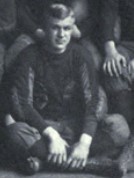
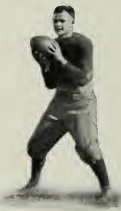
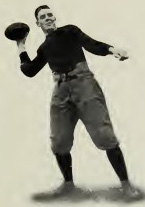

L-R: Arthur Erdall, George Squirer, Ralph Chapman, Bernie Bierman
Erdall and Bierman: University of Minnesota Gopher Yearbook Class of 1916
Squirer and Chapman: University of Illinois Illio Yearbook, Class of 1915
Third Quarter
Illinois put its "spread formation" into play early in the third quarter and drove to the Minnesota 11. But after advancing the ball by "shift plays," the Illini tried to score on line plunges that were stopped cold. The Gophers rose up and dropped runners for a total loss of 15y on three plays to turn the ball over on downs.
Neither side threatened the rest of the period. As time ran out, Macomber hoisted a neat pass to Perry Graves that put the Illini on Minnesota's 32.
Fourth Quarter
After the futility of the first three periods, no one would have believed that the final quarter would produce 27 points.
Clark dashed to the 17 and a moment later scrambled to the three. Then the Illini got cute and paid a price. They tried a fake kick, but Minnesota threw the runner for a 10y loss. Finally Macomber attempted a place kick, but John Townley blocked it, and Solon fell on the ball.
A holding penalty killed the Minnesota possession, forcing a punt. This time, the Illini would not be denied. Macomber launched a long forward pass to George Squirer to place the ball within a few inches of Minnesota's goal. Clark then plunged over to break the scoreless tie. Macomber booted the point. Illinois 7-0
Under the rules of the day, Illinois received the ensuing kickoff, Clark returning it to the Minnesota 45. Macomber dashed over tackle for 15y. Then Pogue darted around right end, evaded two tacklers, and continued to the end zone to make it 14-0 Illinois.
The desperate Gophers became "a band of demons." First, they forced the Illini back until Ralph Chapman punted out of bounds on his own 47. Minnesota then launched a touchdown drive in the next three minutes that mixed line plunges with forward passes to the 10. Two plays later, HB Bernie Bierman shot over he goal line to put the Gophers within striking distance. The extra point kick failed. Illinois 14 Minnesota 6
Illinois kicked off, and Minnesota started another march up the field, completing several passes. But they threw one pass too many. Pogue intercepted a long aerial on his 40 and zigzagged his way through the Gophers for the final touchdown.
FINAL SCORE: ILLINOIS 21 MINNESOTA 6
FINAL SCORE: ILLINOIS 21 MINNESOTA 6
The Illini completed four of 10 passes for the afternoon, which was an admirable percentage in that era when the football was rounder and heavier.
After the game, Zuppke said, "We will not stop until we have the Conference championship safely tucked away."
That night in Champaign, 3,000 Illini rooters paraded through the streets celebrating the victory. When the Illini returned at noon Sunday, they were met at the train station and hauled in triumph to the campus.
Postscript
The Illini defeated Chicago two weeks later 21-7, then ended their spotless campaign with a 24-9 victory at Wisconsin to become the undisputed Western Conference champions.
References
Allison Danzig, The History of American Football: Its Great Teams, Players, and Coaches (1956)
Maynard Brichford, Bob Zuppke: The Life and Football Legacy of the Illinois Coach (2009)
Allison Danzig, The History of American Football: Its Great Teams, Players, and Coaches (1956)
Maynard Brichford, Bob Zuppke: The Life and Football Legacy of the Illinois Coach (2009)